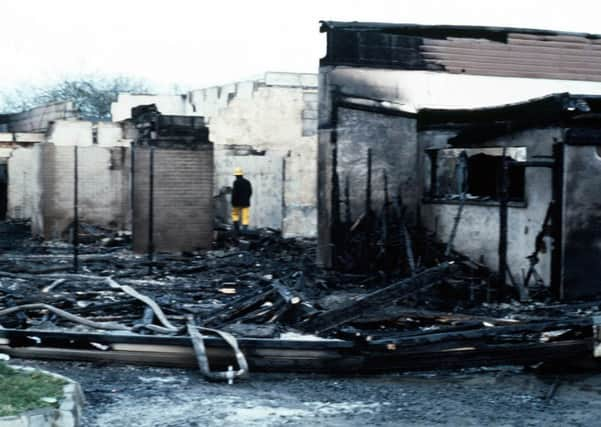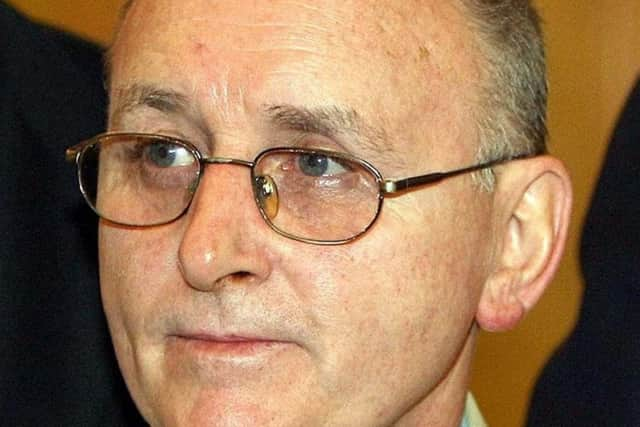La Mon 40th anniversary: some families still pressing for fresh investigation


Twelve people died when a huge firebomb ripped through the country hotel during a dinner organised by the Irish Collie Club.
Giving only a nine-minute warning, the bombers attached large incendiary device to a window of the hotel shortly after 8pm on February 17, 1978.
Advertisement
Hide AdAdvertisement
Hide AdThe ensuing fireball – estimated by forensic experts to have been 60ft in diameter – claimed the lives of seven women and five men, including three married couples, with the bodies of many charred beyond recognition.


All of the victims were Protestant.
The HET report led to some of the victims’ families calling for a public enquiry to examine how “key documentation has been mislaid” – and to probe the role of alleged bombing suspect Denis Donaldson who was exposed as a MI5 and Special Branch agent in 2005.
Interviews with suspected IRA members, original documents created by dozens of detectives, and notes about a warning call and a car used by the bombers were not able to be located.
In a letter to one of the bereaved families following the review of evidence, the director of the HET said: “Despite enquiries carried out by the HET and additional forensic analysis on available exhibits, the review did not uncover any evidential opportunities.”


Advertisement
Hide AdAdvertisement
Hide AdA complaint about the RUC investigation was subsequently made to the NI Police Ombudsman (PONI), leading to another review of the initial RUC investigation.
This week, a PONI spokesman said: “We are continuing to liaise with the families and their representatives, and the case will progress to full investigation in due course.”
The Ulster Human Rights Watch (UHRW), which represents several relatives of the La Mon victims, has produced a report highlighting concerns around the thoroughness of previous investigations. UHRW has also said the early involvement of Special Branch in the murder investigation “gives rise to the question of possible collusion between agent-handlers from RUC SB and agents working as informers who had infiltrated the IRA”.
However, a former SB detective told the News Letter there was “nothing particularly unusual or revelatory” about SB input in a major murder inquiry.
Advertisement
Hide AdAdvertisement
Hide Ad“At least one SB officer would be seconded to an investigation into a terrorist incident for the purposes of responding to a variety of tasking flowing from the CID SIO (senior investigating officer),” he said.
“There is a clear logic in SB officers performing this role in support of an investigation because the SB officer may be up to date with the influx of information linked to the incident from human and other sources, and also, the SB officer can take tasks from the CID SIO that require further development through the auspices of human, and other, sources and potentially manage sensitivities linked to such information with the SIO.
“This doesn’t involve any sinister connotations, as suggested here.”
He added: “Given the gravity of what occurred at La Mon, there would have been every requirement for the primary intelligence arm of the RUC, namely its SB, to support the investigation.”
Advertisement
Hide AdAdvertisement
Hide AdAddressing UHRW concerns that “the HET report does not explain why the RUC CID were rightly convinced the PIRA was behind the attack,” the former officer said: “The CID weren’t fools. They would have known the capability of various proscribed organisations at this point in the conflict but SB would have been best placed to confirm PIRA involvement.”
Another section of the UHRW report states: “It was submitted that the issue in the investigation of the La Mon House atrocity was related to the possible failure of Special Branch to pass on intelligence to the Criminal Investigation Department in order to prevent the possible prosecution of their agent(s).
“Therefore it was thought possible that Special Branch protected (a) paid agent(s) of the State, as was the case with agents involved in the murder of Pat Finucane, and as such this was an issue that needed to be examined with regards to the La Mon bombing.”
The former long-serving Belfast SB officer responded saying: “It may well have been ‘submitted’ and ‘thought possible’ that this was the issue, but if there is no evidential link to substantiate this claim then it remains hollow. Are we to make this claim in relation to every terrorist incident that occurred during the Troubles if successful prosecutions failed to materialise?”
Advertisement
Hide AdAdvertisement
Hide AdThere is a general consensus that Denis Donaldson was not recruited as a security force agent until the 1980s, sometime after the La Mon atrocity, however, UHRW believe there is a “suspicion” Donaldson had been an agent at the time of the La Mon attack.
The UHRW report goes on to day: “Following the publication of the HET report, it was claimed in the Sunday Mirror that Denis Donaldson, who was a self-confessed MI5 agent and another IRA informer, had both been ‘heavily involved in the La Mon operation.’ This information heightened the suspicion of collusion between security forces and IRA terrorists acting as informers.”
The former officer rejected this analysis as “conjecture” based upon “Donaldson’s much later revelation of his role as a source,” and added: “An unverifiable story in the Sunday Mirror, lacking corroboration, is used as the basis to raise the suspicion of collusion? Based upon what? It is a very easy allegation to level at Donaldson, because he is no longer with us”.